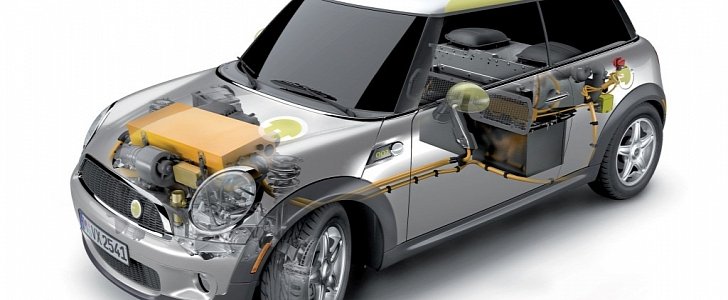Ever since electric cars became a thing (again, we should add, since they were one at the start of last century as well), their drivetrain usually consisted of an electric motor and a single-gear transmission, and we never seemed to have any problem with that.
It works, so why would we? Well, how about the entirety of the last century during which our cars and vehicles in general have had an ever-growing number of gears added to their gearboxes, all in the name of increased performances and better efficiency? How is having just the one suddenly OK?
We know it has something to do with the way an electric motor delivers power, particularly its ability to give full torque from zero rotations per minute, but we couldn't really explain it to somebody if they wanted to go into more details. Of course, apologies for the assumption if you're one of the ones that could - but in that case, let me ask you this: what the hell are you doing here? Came to gloat?
Thanks to the YouTube channel called Engineering Explained and its partnership with FIA's Formula E racing championship, we now get a very simple yet complex explanation of how things work. It involves some basic maths (multiplication, division, second-grade stuff like that), but don't worry, you won't have to do any. Just take the guy's word for it and focus on the important bit.
If you're too lazy to watch the whole clip (apart from the fact you might have ADHD), here's a very brief and crude summary. It's all down to three factors: the high-revving nature of electric motors, the fact they remain efficient over a broad rpm range, and, as we've said before, they deliver their maximum torque from virtually zero rpm.
This enables electric vehicles to have their gearing set up for their top speed while also being able to drive normally at lower speeds.
For conventional engines, such a setup would be impossible as the lower maximum revs and the nature of their torque delivery mean they would either max out at 60 km/h (37 mph) or be forced to function at ridiculously low rpm when cruising at 20 km/h (12.5 mph).
To get an idea, all you need is a car with a manual transmission and one minute to try these two simple things: the first is to reach 100 km/h (62 mph) in first gear, and the second is to set off from a standstill in fifth. Watch the clip below for a much more detailed explanation.
We know it has something to do with the way an electric motor delivers power, particularly its ability to give full torque from zero rotations per minute, but we couldn't really explain it to somebody if they wanted to go into more details. Of course, apologies for the assumption if you're one of the ones that could - but in that case, let me ask you this: what the hell are you doing here? Came to gloat?
Thanks to the YouTube channel called Engineering Explained and its partnership with FIA's Formula E racing championship, we now get a very simple yet complex explanation of how things work. It involves some basic maths (multiplication, division, second-grade stuff like that), but don't worry, you won't have to do any. Just take the guy's word for it and focus on the important bit.
If you're too lazy to watch the whole clip (apart from the fact you might have ADHD), here's a very brief and crude summary. It's all down to three factors: the high-revving nature of electric motors, the fact they remain efficient over a broad rpm range, and, as we've said before, they deliver their maximum torque from virtually zero rpm.
This enables electric vehicles to have their gearing set up for their top speed while also being able to drive normally at lower speeds.
For conventional engines, such a setup would be impossible as the lower maximum revs and the nature of their torque delivery mean they would either max out at 60 km/h (37 mph) or be forced to function at ridiculously low rpm when cruising at 20 km/h (12.5 mph).
To get an idea, all you need is a car with a manual transmission and one minute to try these two simple things: the first is to reach 100 km/h (62 mph) in first gear, and the second is to set off from a standstill in fifth. Watch the clip below for a much more detailed explanation.


